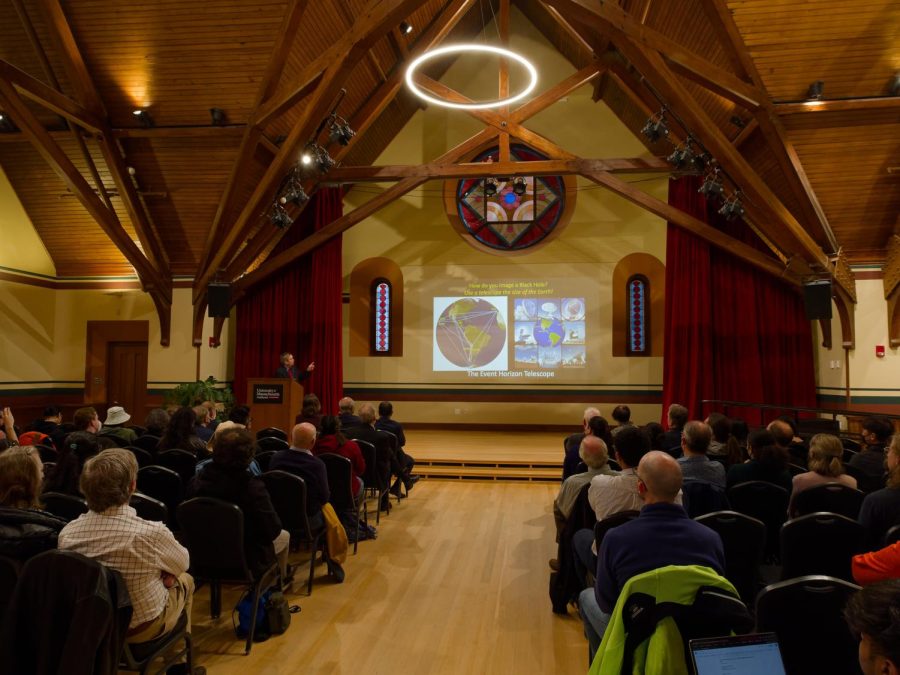
A chemical engineer at the University of Massachusetts developed an improved method of converting wood into synthetic fuels.
“We’re focused on lignocellulosic biomass,” said Assistant Professor Paul Dauenhauer. “What I mean by that is trees and grasses – ways we can take those trees and grasses and turn them into synthetic fuels and chemicals.”
Dauenhauer said that there are three ways that wood can be converted. One being biologically and another that involves a process called gassification, where wood is heated very rapidly in a reactor with no oxygen to a temperature where it glows bright orange and vaporizes into synthesis gas, which can then be converted into fuels.
The third way, the method Dauenhauer has been working with, is called partial oxidation and is similar, but involves heating the wood quickly in the presence of low amounts of oxygen and then cooling it just as rapidly.
“It breaks up, but not completely,” Dauenhauer said. “You end up with a liquid called bio-oil, which looks kind of like petroleum, but chemically is very different. You can then take that brown, goopy material and process it to make fuels and chemicals.”
He said that the bio-oil can be made into methanol, aromatic compounds – like styrene, linear alkanes, which are similar to diesel fuel and polyethylene, or as it’s more commonly known, plastic.
“All these kinds of products are the same things as if you were using petroleum, so we’re looking to replace petroleum in the process,” Dauenhauer said. “It sounds far out there, but if you can take wood and convert into something that can be used in a refinery, most of the infrastructure is already there.”
Dauenhauer said that the properties in the plant cells in the wood are so different, that it is possible to turn the wood into liquid for a short period of time.
“For one-tenth of a second it goes from solid to a liquid droplet to gas. During that time it’s liquid. It does what’s called wetting. The droplet is absorbed into the surface,” he said. “Discovering that trees turn into liquid is very exciting for us, because we’ve been studying how trees break down over 30 years.”
According to Dauenhauer, “We now know that this is the key intermediate step in the breakdown process.”
Dauenhauer said that this discovery led to a breakthrough.
“If you take this process and go through to a gas, you can actually get all the carbon to end up as a precursor to biofuels,” he said
He added, “In the past, only about 50 percent of the carbon ended up going towards biofuels. In essence it’s doubling you’re production of biofuels.”
Dauenhauer also said that it is even possible to go beyond 100 percent of carbon conversion, resulting in creating product necessary for biofuels.
“It sounds weird, but what we did was, if you co-heat carbon dioxide, so you have a piece of biomass and carbon dioxide, under the right conditions you use the carbon dioxide to force the chemistry backwards, using a special reaction called water-gas shift,” he said
“You can end up converting all the biomass carbon and some of carbon dioxide into carbon monoxide, which is what we use to make biofuels.”
The carbon monoxide can be reacted with hydrogen gas to make fuel. To get around petroleum shortages during World War II, the Germans worked on a similar method with coal to manufacture synthetic fuels.
In the United States, research is focused on wood and grasses because they can grow in places food crops don’t and the species of trees they’ve been conducting research on, hybrid poplars, are fast growing and outcompete other sources of biomass. Dauenhauer added that the ecology of the trees has been studied and the hybrid poplars are also the most environmentally friendly because they use less nitrogen and phosphorous from the soil.
Dauenhauer said that there are all sorts of new projects being planned to study the behavior of the wood liquid while using the discovery to produce synthetic diesel, gasoline and ethanol is an engineering issue.
“We want to break down the process and study each individual reaction,” Dauenhauer said. “The other thing, which is more on the engineering side, is finding reactor designs that would allow us to build this up into a large system.”
“This is an extremely important issue,” Dauenhauer said. “People have an image of using petroleum or clear-cutting forests, but those aren’t the options we’re looking at here. We’re looking at controlled agriculture, similar to what the paper industry does.”
Matthew M. Robare can be reached at [email protected].







Cindy • Jul 24, 2013 at 1:15 pm
Great web site you have here.. It’s difficult to find good quality writing like yours these days. I seriously appreciate people like you! Take care!!